The 20 Best Medical Schools in the US (T20): Acceptance Rates, MCAT Scores, & GPA
Looking to pursue a career in medicine? Explore our comprehensive guide to the top 20 medical schools in the U.S., complete with class profile info, rankings like average test scores and GPAs, deadlines, and more!

By Krysta F.
Your Favorite Med School Coach's Favorite Med School Coach
Posted July 2, 2025

Join a free event
Learn from top coaches and industry experts in live, interactive sessions you can join for free.
Table of Contents
Are you considering a career in medicine and looking for the best medical schools in the country? If so, you might have come across the term “T20 medical schools.” This is the designation for the top 20 medical schools in the United States, offering world-class education and training for aspiring doctors.
Over the last five years, I have worked with hundreds of students to pursue their career ambitions, with a focus on working with students in the sciences in applying to medical school (DO & MD), PA school, dental school, etc. Here, I’ve included some of the insights I’ve gained during that time to give you a comprehensive guide to T20 medical schools. From program details to admission requirements to alumni networks, class profiles, and more, it’s all here! Before we get started, I should note: these elite programs require outstanding academic performance, including top GPAs and MCAT scores, as well as a commitment to the AAMC Competencies. In addition to your stats, it’s important that you can make meaning of, and effectively communicate about, the experiences you’ve had as you’ve prepared for this next step in the process.
What Are the Top 20 Medical Schools in the US?
As I mentioned, T20 medical schools refer to the top 20 medical schools in the United States, based on various ranking systems, including the US News and World Report. These top-ranked, prestigious medical schools are known for their excellence in medical education, scientific research, and clinical practice.
| School Name | Acceptance Rate |
|---|---|
| 1. Harvard Medical School | 3.2% |
| 2. Johns Hopkins University School of Medicine | 5.6% |
| 3. University of Pennsylvania (Perelman School of Medicine) | 3.8% |
| 4. Columbia University College of Physicians and Surgeons | 1.9% |
| 5. Duke University School of Medicine | 2.2% |
| 6. Stanford University School of Medicine | 1.0% |
| 7. University of California–San Francisco (UCSF) | 1.8% |
| 8. Vanderbilt University School of Medicine | ~6.9% |
| 9. Washington University School of Medicine in St. Louis | ~2.0% |
| 10. Weill Cornell Medical College | 1.4% |
| 11. NYU Grossman School of Medicine | 2.5% |
| 12. Yale School of Medicine | 5.5% |
| 13. Mayo Clinic Alix School of Medicine | 4.2% |
| 14. Northwestern University Feinberg School of Medicine | 1.72% |
| 15. University of Michigan Medical School | 1.85% |
| 16. University of Pittsburgh School of Medicine | 3.6% |
| 17. University of Washington School of Medicine (WWAMI only) | 6.6% (0.5% OOR) |
| 18. Icahn School of Medicine at Mount Sinai | ~6.2% |
| 19. UCLA David Geffen School of Medicine | 2.4% |
| 20. University of Chicago Pritzker School of Medicine | 3.7% |
The Top 20 Best Medical Schools in the US
If you're aiming for the highest levels of training in medicine, these programs should be at the top of your list. Beyond prestige, these schools offer tight-knit communities, meaningful mentorship, and opportunities to make a real impact in healthcare.
1. Harvard Medical School

Founded in 1782, Harvard Medical School is widely regarded as the #1 medical school in the US, and it lives up to the reputation. Students have access to world-class hospitals, groundbreaking research, and deep community partnerships throughout Boston. The admissions bar is high: most accepted students have near-perfect academic records, with MCATs around 520+ and GPAs close to 3.9 or above.
Harvard Medical School’s acceptance rate is 3.2%.
But numbers don’t tell the whole story. Harvard offers two distinct tracks (Pathways and HST), countless research opportunities, and a strong emphasis on leadership and service. It’s a top choice for medical students looking to combine clinical excellence with innovation and global impact.
Class Profile – Harvard Medical School (Class of 2028)
- Median GPA: 3.9
- Median MCAT Score: 520.42
- Section Averages:
- BBFL: 130.31
- CARS: 128.84
- CPBS: 130.41
- PSBB: 130.86
- Section Averages:
- Total Applicants: 6,856
- Interviews Conducted: 757
For more information on the class profile, see Harvard Medical School’s official report.
Demographics
The incoming class at Harvard Medical School reflects a diverse range of backgrounds and experiences. By gender, the cohort is 60% women, 38% men, and 2% identifying with another gender identity. Additionally, 17% of students are from groups underrepresented in medicine. Academically and geographically, students come from 57 different colleges across 35 U.S. states and 7 countries. Ages range from 21 to 34, with 73% of students holding undergraduate degrees in science-related fields.
The average class size at Harvard Medical School is 165 students, with 135 students pursuing the Pathways MD track, 30 students pursuing the HST (Health Sciences and Technology) track, and 14 students pursuing the MD-PhD.
2. Johns Hopkins University School of Medicine
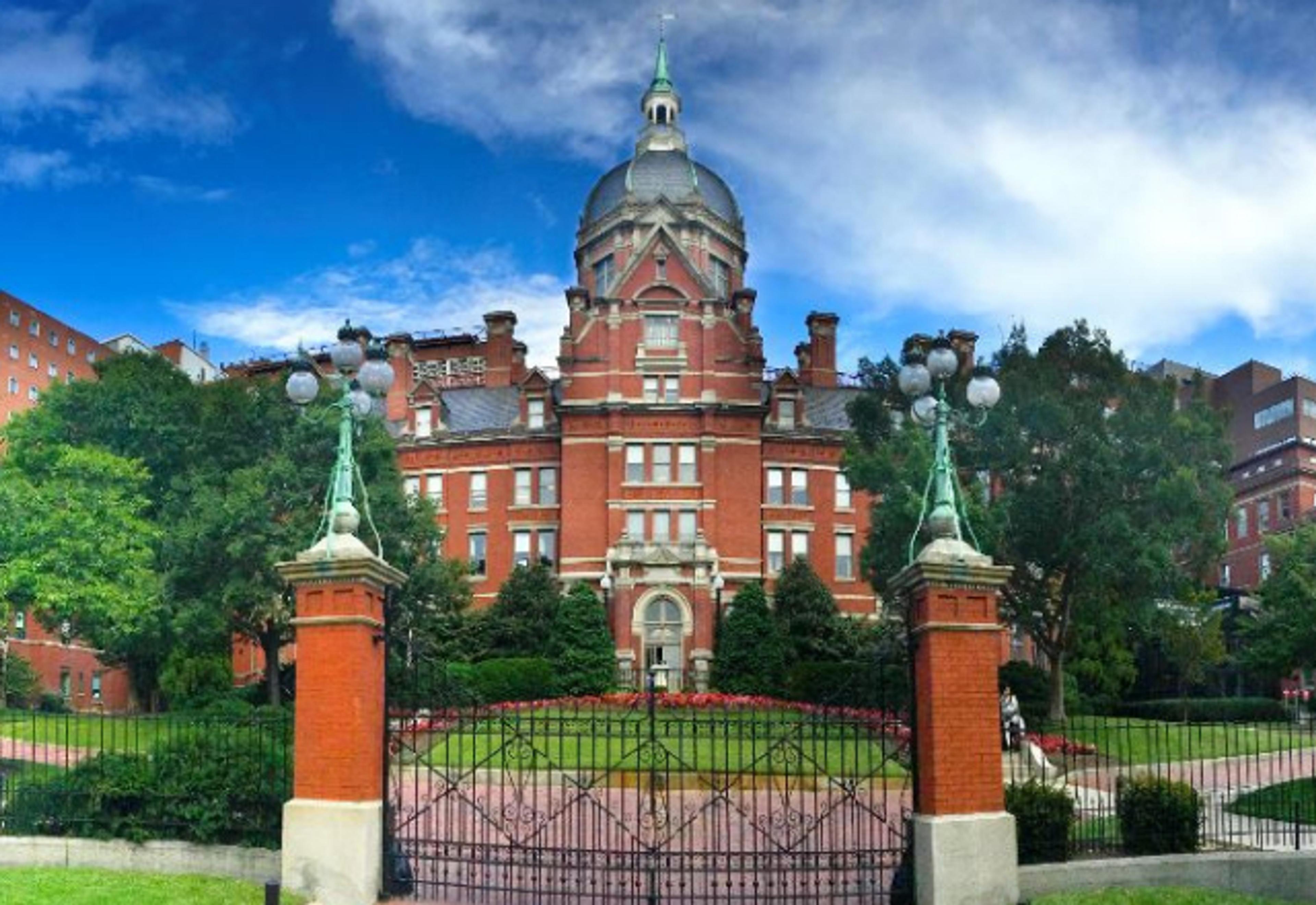
Founded with a mission of advancing both patient care and medical discovery, Johns Hopkins University School of Medicine is one of the most respected institutions in the country. Its teaching hospital, Johns Hopkins Hospital, is world-renowned and the birthplace of several specialties including neurosurgery and cardiac surgery. The school is known for its strong research emphasis, interdisciplinary education, and commitment to patient-centered care.
Johns Hopkins School of Medicine’s acceptance rate is 5.6%.
Admissions are highly selective, with most admitted students holding exceptional academic records. The school’s reputation for innovation and leadership in medicine makes it a top destination for applicants pursuing both clinical excellence and research opportunities.
Class Profile – Johns Hopkins School of Medicine (Class of 2028)
- Median GPA: 3.94
- Median MCAT Score: 520
- Total Applicants: 4,409
- Class Size: 129 (includes both MD and MD-PhD students)
For more information on the class profile, see Johns Hopkin’s official report.
Demographics
The incoming class at Johns Hopkins reflects a diverse mix of experiences and identities. The cohort is 62% women, 36% men, and 2% identifying with another gender identity. 19% of students are from groups underrepresented in medicine, 13% are first-generation college students, and 2% have military backgrounds. Students come from 62 undergraduate institutions across 29 U.S. states and 2 countries.
3. University of Pennsylvania Perelman School of Medicine
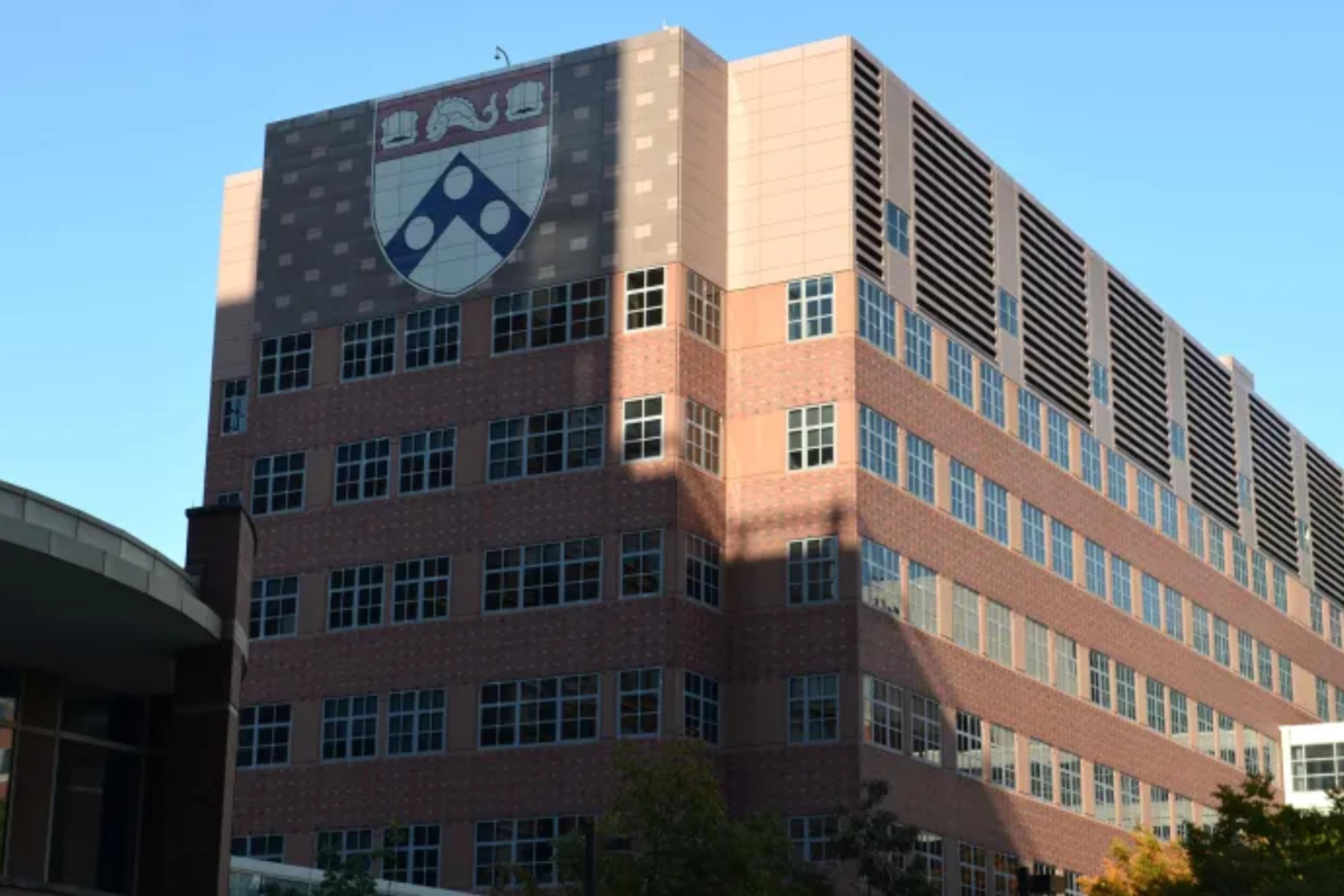
Founded in 1765, the Perelman School of Medicine at the University of Pennsylvania is the oldest medical school in the United States and consistently ranks among the nation’s best. Known for its integrated curriculum, cutting-edge biomedical research, and close ties to leading hospitals like the Hospital of the University of Pennsylvania and CHOP, Perelman prepares students to lead in both clinical medicine and scientific discovery
Perelman School of Medicine’s most recent acceptance rate has not been publicly reported, but historically, it has been 3.8%, with the number of annual applicants estimated at between 6,000-7,000.
Admissions are highly selective, with a focus on academic excellence, intellectual curiosity, and a demonstrated commitment to service and leadership. The school’s strong emphasis on inclusion, innovation, and flexibility makes it a top choice for students from a wide range of backgrounds.
Class Profile – Perelman School of Medicine (Class of 2024-25)
- Median GPA: 3.97
- Median MCAT Score: 522
- MCAT Section Medians:
- CARS: 130
- CPBS: 131
- PSBB: 131
- BBFL: 131
- MCAT Section Medians:
- MCAT Score Range: 514–528
- GPA Range: 3.49–4.00
- Class Size: 154
- MD: 123 (80%)
- MD-PhD: 31 (20%)
For more information on the class profile, see the Perelman School of Medicine’s most recent official report.
Demographics
The incoming class at Perelman reflects a broad range of experiences, backgrounds, and identities. Among the 154 students, there are 70 men, 83 women, and 1 student identifying with another gender identity. The class includes 16% who identify as LGBTQ+, 10% who are first-generation college graduates, and 29% who come from low-income or economically disadvantaged backgrounds. Students range in age from 21 to 35, with an average age of 23, and come from 68 undergraduate institutions across 21 U.S. states.
4. Columbia University Vagelos College of Physicians and Surgeons

Columbia VP&S is one of the most elite medical schools in the US, known for its academic rigor, long-standing history of innovation, and commitment to service in urban health. As the first American medical school to award the MD degree, Columbia has played a pivotal role in shaping modern medical education. Today, it continues that legacy through cutting-edge research, nationally ranked residency placements, and community engagement in neighborhoods like Harlem and Washington Heights.
Columbia VP&S’s acceptance rate is 1.9%.
Admissions are extremely selective, with admitted students demonstrating top-tier academic credentials and a strong record of service, research, and leadership. Students benefit from world-class clinical training at NewYork-Presbyterian Hospital and extensive resources tied to Columbia’s large research ecosystem.
Class Profile – Columbia VP&S (Class of 2028)
- Median GPA: ~3.94 (Estimated from GPA range of 3.39–4.0)
- Median MCAT Score: 520–522 (Estimated from MCAT range of 508–528)
- MCAT Score Range: 508–528
- GPA Range: 3.39–4.0
- Total Applicants: 7,291
- Interviews Conducted: 757
- Class Size: 140
For more information on the class profile, see the official Columbia VP&S report.
Demographics
The incoming class at Columbia VP&S reflects academic excellence and a growing focus on inclusion. The class is 51% female and 49% male, with 4% identifying as first-generation college students. Students come from 60 different colleges and represent 32 US states.
Read: Columbia Med School Acceptance Rate: Admission Statistics and Tips
5. Duke University School of Medicine

Duke University School of Medicine is known for its innovative, accelerated curriculum. Students complete all pre-clinical coursework in the first year and begin clinical rotations in the second—far earlier than most other programs. In the third year, students pursue research, dual degrees, or global health experiences, making the curriculum uniquely flexible and academically rich.
Duke School of Medicine’s acceptance rate is 2.2% as of 2024.
Admissions are highly competitive, with accepted students demonstrating outstanding academic performance, intellectual curiosity, and leadership potential. Duke’s early clinical exposure, emphasis on research, and strong mentorship culture make it a top choice for students seeking a forward-thinking medical education.
Class Profile – Duke School of Medicine (Class of 2024)
- Median GPA: 3.9
- Median MCAT Score: 520
- MCAT Score Range: 511–526
- GPA Range: 3.83–4.0
- Total Applicants: 8,285
- Applications Submitted: 5,452
- Interviews Conducted: 624
- Class Size: 119
For more information on the class profile, see Duke School of Medicine’s official report
Demographics
The incoming class at Duke represents strong academic diversity across the US. Students matriculated from 54 undergraduate institutions and come from 35 states. Interviewees represented 135 colleges across 47 states, reflecting the program’s broad national reach.
Read: Duke University School of Medicine: Admission Requirements and Application Process
6. Stanford University School of Medicine

Stanford University School of Medicine is one of the most selective medical schools in the country, known for its strong interdisciplinary research, early clinical training, and flexible, student-driven curriculum. Its unique Discovery Curriculum allows students to pursue scholarly concentrations, dual degrees, or advanced research through programs like MSTP and the Berg Scholars Program.
Stanford School of Medicine’s acceptance rate is 1.0%.
Admissions are intensely competitive and holistic, with the school placing strong value on academic excellence, leadership, life experience, and long-term vision. With only 90 seats and nearly 9,000 applicants, Stanford attracts students who are not only top scholars, but also future innovators and changemakers in medicine.
Class Profile – Stanford School of Medicine (Class of 2028)
- Median GPA: 3.94
- GPA Range: 3.68–4.0
- Median MCAT Score: 518
- MCAT Range: 511–525
- Total Applicants: 8,998
- Interviews Conducted: 497
- Class Size: 90
For more information on the class profile, see Stanford School of Medicine’s official report.
Demographics
While detailed demographic data has not been provided, Stanford’s incoming class is selected through a highly holistic process and represents a broad range of backgrounds, experiences, and academic interests. Students train across five clinical sites and benefit from a faculty that includes 7 Nobel laureates and dozens of members of prestigious research academies.
7. University of California-San Francisco School of Medicine
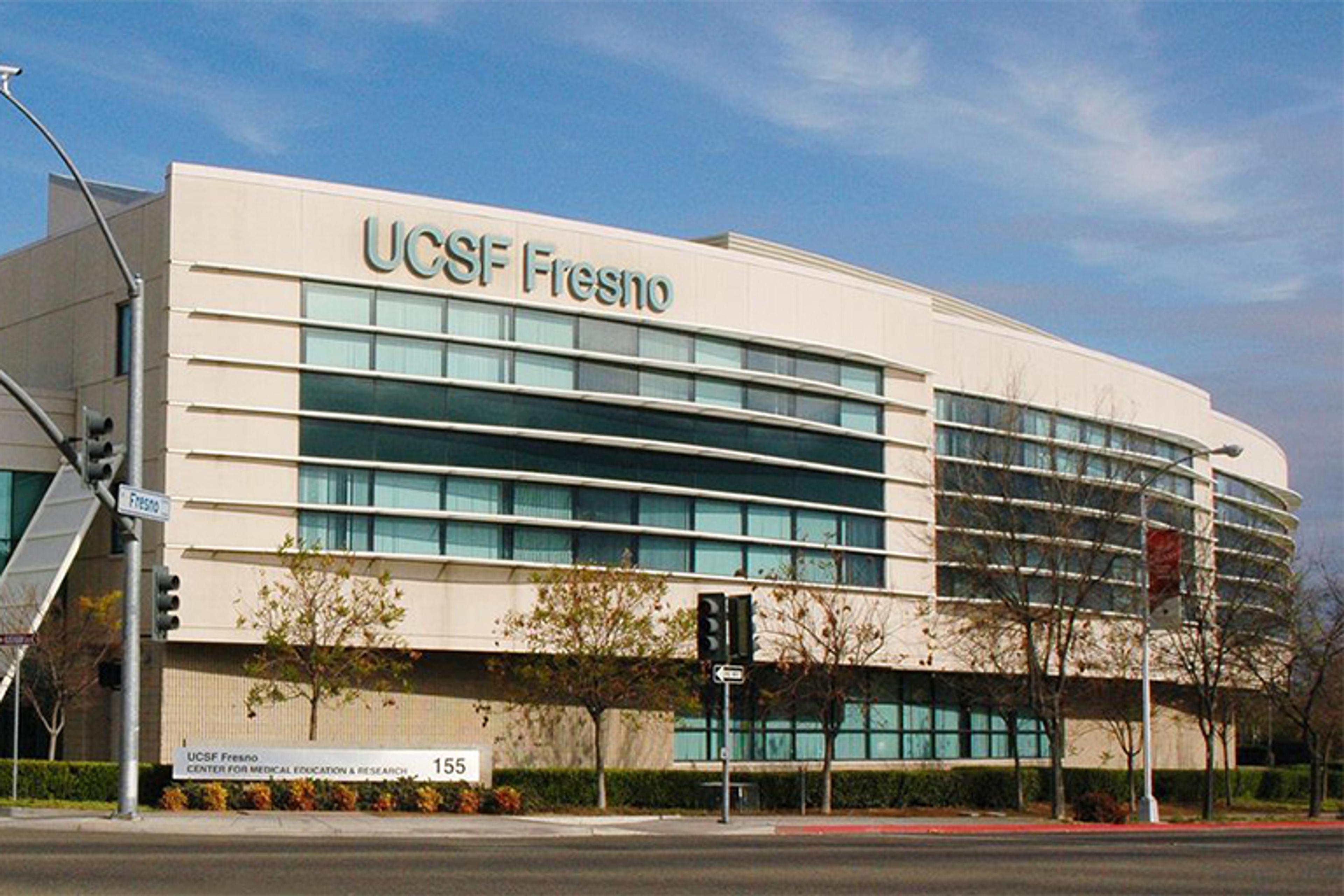
UCSF School of Medicine is one of the most prestigious public medical schools in the United States, consistently ranked among the top for both primary care and research. Its innovative Bridges Curriculum integrates foundational science, clinical care, and inquiry throughout all four years, preparing students to lead in both patient care and medical discovery.
UCSF School of Medicine’s acceptance rate is 1.8%.
Admissions are highly selective, with a strong emphasis on academic achievement, community service, and a demonstrated commitment to underserved populations. The school receives more NIH funding than any other public medical school and gives strong preference to California residents.
Class Profile – UCSF School of Medicine (Class of 2023)
- Median GPA: ~3.87 (estimated from recent class profiles)
- Median MCAT Score: ~515 (estimated; typically in the 90th percentile)
- Total Applicants: 8,774
- Interviews Conducted: 525
- Class Size: 161
For more information on the class profile, see UCSF School of Medicine’s official report.
Demographics
UCSF’s incoming class is deeply mission-driven and reflects a strong commitment to diversity and public health. The average age at matriculation is 24, and 71% of students are California residents. While full demographic data isn’t publicly detailed, the class is selected to represent a broad range of backgrounds, life experiences, and service-focused goals.
Read: How to Get Into UCSF School of Medicine: Acceptance Rate, Tuition, & Prerequisites
8. Vanderbilt University School of Medicine
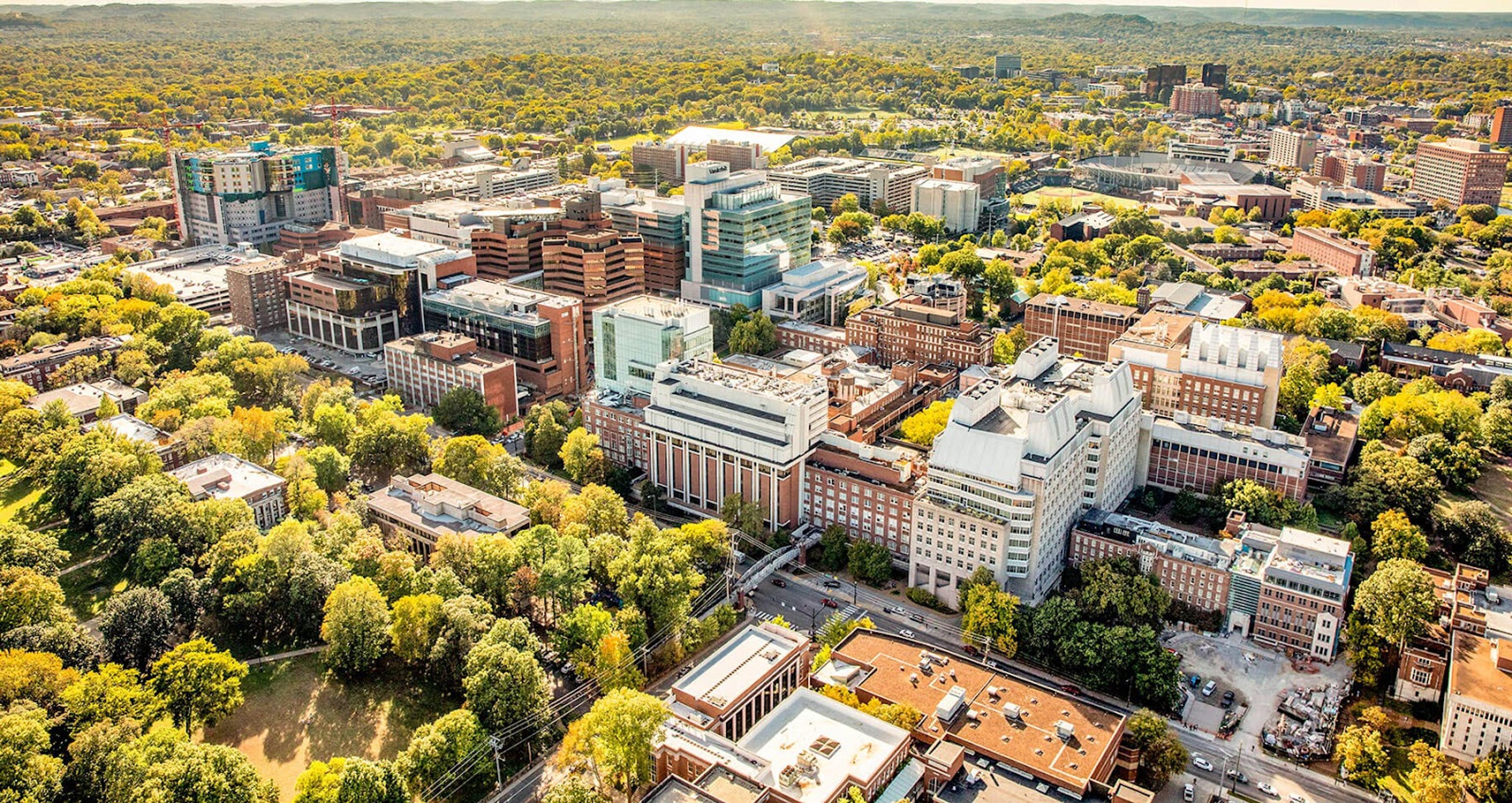
Vanderbilt University School of Medicine (VUSM) is consistently ranked among the top medical schools in the U.S., known for its innovative Curriculum 2.0. This flexible, research-focused program emphasizes early clinical exposure, hands-on inquiry, and a deep commitment to community health and academic leadership.
Vanderbilt School of Medicine’s acceptance rate is approximately 6.9%.
Admissions are competitive, with most students bringing strong academic records, meaningful research or service experience, and unique educational backgrounds. Over 70% of students take one or more gap years before matriculation, and many pursue interdisciplinary majors such as Neuroscience, Medicine, Health & Society, or Spanish.
Class Profile – Vanderbilt School of Medicine (2021)
- Median GPA: 3.9
- Median MCAT Score: 520
- Total Applications: ~8,000+
- Interviews Conducted: ~624
- Class Size: 119
For more information on the class profile, see Vanderbilt School of Medicine’s official report.
Demographics
While complete demographic data is not publicly available, Vanderbilt’s incoming class reflects a wide range of academic and cultural backgrounds. Students come from diverse majors and life paths, with many having taken gap years and engaged in research, service, or global health work prior to matriculation. The school places a strong emphasis on inclusion, intellectual curiosity, and leadership in healthcare.
9. Washington University School of Medicine

Washington University School of Medicine is known for its academic rigor, world-class research, and a collaborative environment that attracts top students nationwide and internationally. With a median MCAT above the 96th percentile and a small class size of just 124 students, the admissions process is intensely competitive. WashU values not only academic excellence but also diverse life experiences, service, and leadership. Students benefit from a flexible curriculum, top-tier research mentorship, and a strong match rate into elite residency programs. WashU offers unmatched preparation for future leaders in academic medicine, global health, and biomedical discovery.
Washington University School of Medicine’s acceptance rate is approximately 2.0%.
Admissions are highly selective, with successful applicants demonstrating top-tier academic credentials alongside a strong track record of leadership, research, and service. The school’s flexible curriculum and robust MD/PhD programs make it a top choice for aspiring physician-scientists and academic leaders.
Class Profile – Washington University School of Medicine (Class of 2023)
- Median GPA: 3.88
- Median MCAT Score: 519.5
- MCAT Score Range: 511–525
- Total Applicants: Estimated 6,000–7,000+
- Class Size: 124
For more information on the class profile, see Washington University School of Medicine’s official report.
Demographics
While detailed demographic breakdowns are not publicly provided, WashU’s incoming class represents a broad range of academic interests, life experiences, and service commitments. Students join from across the US and abroad, and the school continues to invest in financial accessibility, mentorship, and a supportive, inclusive environment for future leaders in medicine.
10. Cornell University Weill Medical College

Weill Cornell Medical College is among the most selective medical schools in the U.S., offering a globally diverse, research-driven education in the heart of New York City. The school emphasizes intellectual curiosity, meaningful life experience, and a deep commitment to service through its holistic admissions process and world-class academic offerings.
Weill Cornell Medical College’s acceptance rate is 1.4%.
Applicants are evaluated for academic excellence as well as leadership, research, and personal growth. With robust clinical partnerships, strong financial aid support, and an international student body, Weill Cornell prepares future physicians to lead in academic medicine, public health, and global healthcare innovation.
Class Profile – Weill Cornell Medical College (Class of 2024)
- Median GPA: 3.9
- GPA Range: 3.6–4.0
- Median MCAT Score: 518
- MCAT Range: 511–524
- Total Applicants: 7,345
- Interviews Conducted: 784
- Class Size: 106
- MD: 90
- MD/PhD: 16
For more information on the class profile, see Weill Cornell Medical College’s official report.
Demographics
The incoming class at Weill Cornell reflects a broad range of backgrounds and academic experiences. The class is 57% women, and 49% of students are multilingual. Notably, 45 students are first-generation, low-income, and 24 are from groups underrepresented in medicine. A total of 95 students took gap years before matriculating. The class includes 24 non-science majors, 73 science majors, and 9 double majors, representing 59 undergraduate institutions and 15 countries of origin.
Read: Cornell Medical School Acceptance Rate — Breakdown & Analysis
11. New York University Grossman School of Medicine

NYU Grossman School of Medicine is one of the most forward-thinking medical schools in the U.S., known for its tuition-free MD program and commitment to educational innovation. Located in the heart of New York City, Grossman offers students access to premier clinical training, groundbreaking research, and a diverse patient population.
NYU Grossman School of Medicine’s acceptance rate is 2.5%.
The admissions process is highly competitive, with students typically presenting near-perfect academic credentials, strong leadership, and a demonstrated commitment to service and discovery. NYU’s tuition-free model attracts top applicants from across the country and around the world.
Class Profile – NYU Grossman School of Medicine (Class of 2024)
- Median GPA: 3.98
- GPA Range (10th–90th Percentile): 3.79–4.0
- Median MCAT Score: 523
- MCAT Range (10th–90th Percentile): 516–527
- Total Applicants: 8,271
- Interviews Conducted: 821
- Class Size: 106
- MD: 91
- MD/PhD: 13
- OMS (Oral Maxillofacial Surgery): 2
For more information on the class profile, see NYU Grossman School of Medicine’s official report.
Demographics
The incoming class at NYU Grossman is globally diverse and academically elite. The average age is 23, with students ranging from 20 to 30 years old. The class is 51% men and 49% women, and students speak a wide variety of languages, including Arabic, Bengali, Chinese, French, German, Hebrew, Italian, Spanish, and Ukrainian. Students come from a broad spectrum of backgrounds and regions, reflecting NYU’s international reach and inclusive admissions philosophy.
Read: How to Get Into NYU Medical School (Grossman) — Acceptance Rate, Requirements, & Ranking
12. Yale School of Medicine

Yale School of Medicine is one of the most prestigious and distinctive medical schools in the world. Its unique Yale System of Medical Education eliminates grades and class rankings in the preclinical years, promoting independent learning, intellectual curiosity, and original research. The school is a hub for physician-scientists, public health leaders, and global changemakers.
Yale School of Medicine’s acceptance rate is 5.5%.
Admissions are highly selective, with an emphasis on academic excellence, leadership, and creativity. Yale offers significant research opportunities, a tuition-free fifth year for academic exploration, and extensive dual-degree and fellowship support, making it a top choice for students seeking depth and flexibility in their medical education.
Class Profile – Yale School of Medicine (Class of 2026)
- Median GPA: 3.92
- Median MCAT Score: 522
- MCAT Section Medians: 130 per section
- Total Applicants: 5,495
- Class Size: 104
For more information on the class profile, see Yale School of Medicine’s official report.
Demographics
Yale’s incoming class represents a diverse and accomplished cohort of students with a strong interest in research and academic medicine. While full demographic data is not publicly disclosed, the school attracts students from across the country and around the world, many of whom bring backgrounds in public service, advocacy, and interdisciplinary scholarship.
Read: Yale School of Medicine: Your Guide to the MD Admissions
13. Mayo Clinic Alix School of Medicine
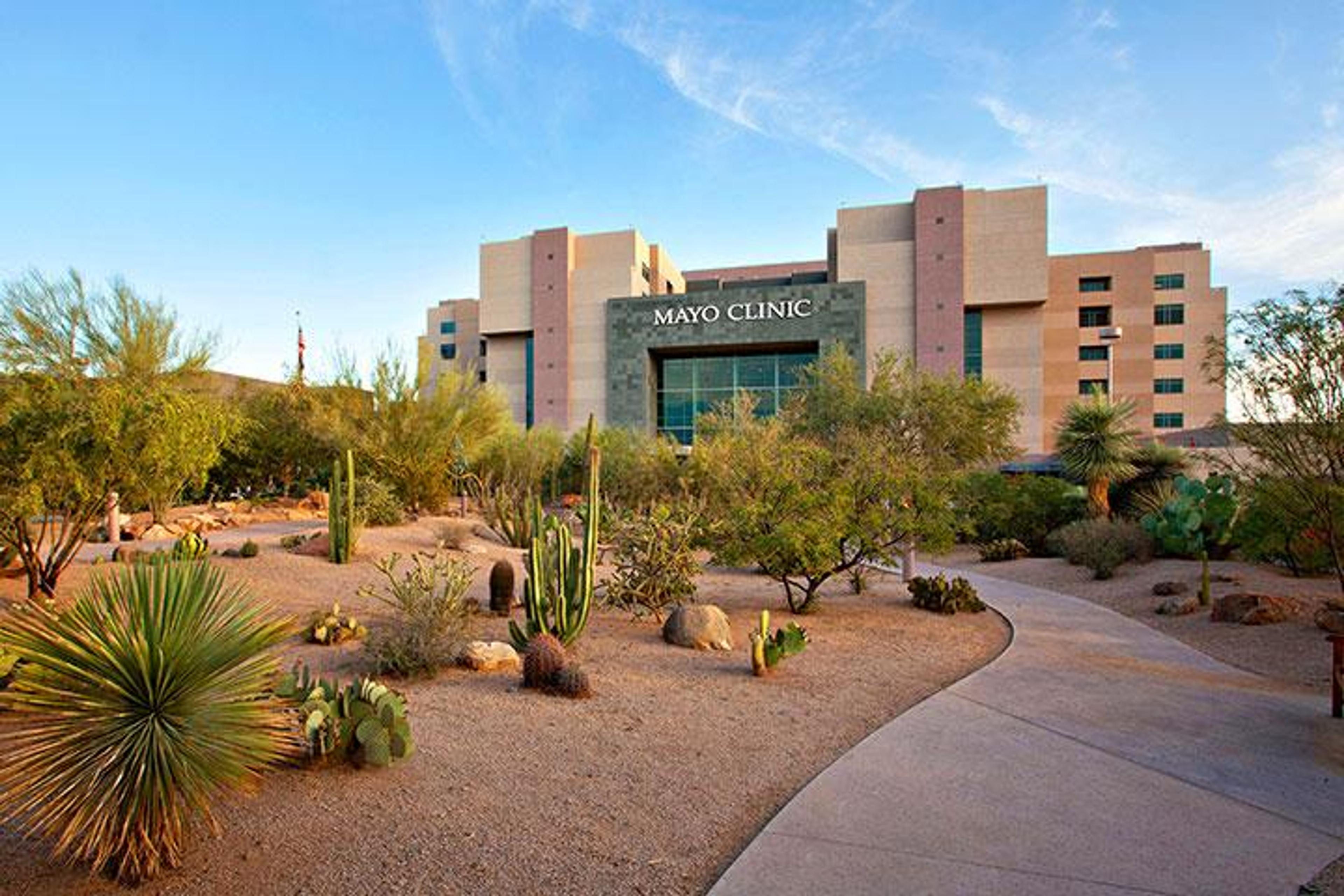
Mayo Clinic Alix School of Medicine offers an elite, research-focused medical education across three U.S. campuses: Minnesota, Arizona, and Florida. Students benefit from personalized academic pathways, access to Mayo Clinic’s world-class clinical and research facilities, and a curriculum designed to develop future leaders in medicine and healthcare innovation.
Mayo Clinic Alix School of Medicine’s acceptance rate is 4.2%.
Admissions are highly competitive, with applicants selected for academic excellence, leadership, and a strong commitment to service. Mayo’s emphasis on translational medicine, research integration, and individualized training makes it a top destination for students pursuing academic medicine and clinical leadership.
Class Profile – Mayo Clinic Alix School of Medicine (Class of 2024)
- Median GPA: 3.94
- Median MCAT Score: 521
- Total Applicants: 5,591
- Interviews Conducted: 793
- Class Size: 105
- MD: 94
- MD/PhD: 11
For more information on the class profile, see Mayo Clinic Alix School of Medicine’s official report.
Demographics
While detailed demographic data is not publicly provided, Mayo’s incoming class is known for its academic strength, diverse life experiences, and strong service orientation. Students are drawn from across the U.S. and beyond, and benefit from one of the highest-rated student experiences in the country, including strong wellness programming, mentorship, and academic support.
Read: Mayo Clinic Alix School of Medicine: Admission Requirements and Application Process
14. Northwestern University Feinberg School of Medicine
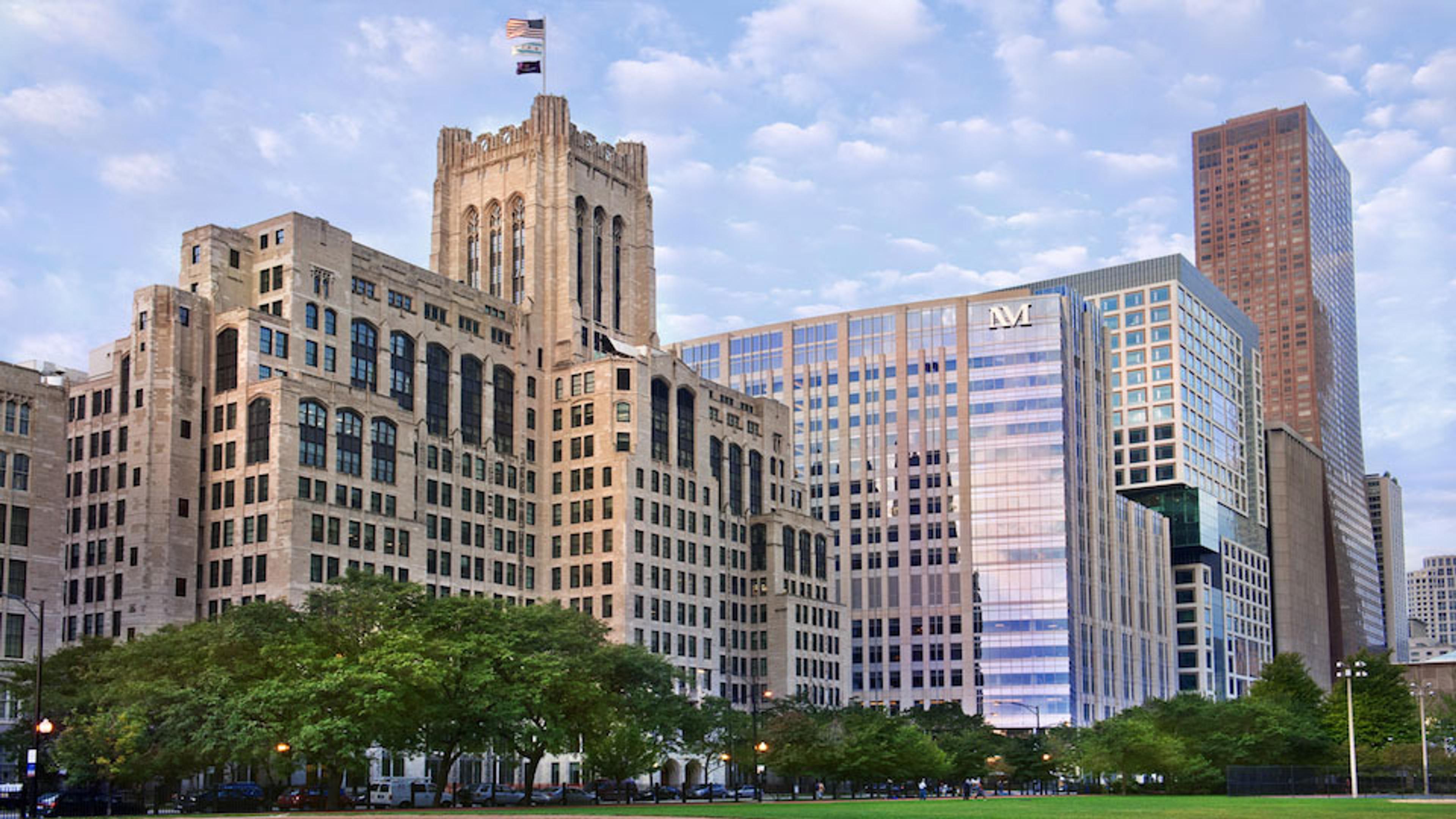
Northwestern University's Feinberg School of Medicine is a top-ranked medical school located in downtown Chicago, known for its innovation in clinical care, public health, and medical education. Feinberg emphasizes leadership, research, and service, preparing students to make meaningful contributions in a wide range of medical fields.
Feinberg School of Medicine’s acceptance rate is 1.72%.
With one of the most competitive admissions processes in the country, Feinberg looks for students with exceptional academic records and deep involvement in research, service, and teaching. The school’s integrated curriculum, global health programs, and location in a major metropolitan area offer students unmatched opportunities for clinical exposure and interdisciplinary learning.
Class Profile – Feinberg School of Medicine (Class of 2024)
- Median GPA: 3.93
- Median MCAT Score: 520
- Total Applicants: 8,138
- Interviews Conducted: 660
- Class Size: 140
For more information on the class profile, see Feinberg School of Medicine’s official report.
Demographics
While specific demographic breakdowns are not publicly provided, Feinberg’s incoming class is academically strong, diverse, and research-oriented. Nearly all incoming students have prior research experience, and more than two-thirds took at least one gap year before matriculating. Students benefit from extensive clinical partnerships, strong mentorship, and access to the resources of Northwestern Medicine and affiliated research centers.
15. University of Michigan-Ann Arbor Medical School

University of Michigan Medical Schoo offers a collaborative, mission-driven environment supported by one of the largest academic health systems in the country. With access to a top public research university’s extensive resources, students benefit from interdisciplinary learning, strong mentorship, and a deep commitment to leadership in both clinical practice and biomedical research.
University of Michigan Medical School’s acceptance rate is 1.85%.
Admissions are highly selective and holistic, attracting students from a wide range of academic, geographic, and socioeconomic backgrounds. Nearly half of each entering class takes two or more gap years, and many pursue dual degrees or advanced research prior to matriculation.
Class Profile – University of Michigan Medical School (Class of 2023)
- Median GPA: 3.84
- Median MCAT Score: ~517–518 (estimated at the 90.5th percentile)
- Total Applicants: 8,919
- Interviews Conducted: 444
- Class Size: 165
For more information on the class profile, see University of Michigan Medical School’s official report.
Demographics
Michigan’s incoming class reflects a wide spectrum of experiences and identities. Students hail from 26 states and bring diverse academic and personal backgrounds. Approximately 42.4% of the class is considered underrepresented in medicine by the school’s expanded definition. Additionally, 21.2% are Pell Grant recipients, and 14.5% identify as socioeconomically disadvantaged on the AMCAS application.
16. University of Pittsburgh School of Medicine

The University of Pittsburgh School of Medicine (UPSOM) attracts a highly accomplished and research-focused student body, with strong foundations in clinical exposure, service, and interdisciplinary learning. Through its close affiliation with UPMC, students benefit from exceptional clinical training and access to one of the nation's top academic medical centers.
University of Pittsburgh School of Medicine’s acceptance rate is 3.6%.
Admissions are competitive and holistic, with an emphasis on academic excellence, research experience, and a demonstrated commitment to service. The school offers robust opportunities in global health, translational medicine, and dual-degree pathways.
Class Profile – University of Pittsburgh School of Medicine (Class of 2024)
- Median GPA: 3.83
- Median MCAT Score: 515
- Total Applicants: 8,259
- Interviews Conducted: 916
- Class Size: 148
For more information on the class profile, see University of Pittsburgh School of Medicine’s official report.
17. University of Washington School of Medicine

The University of Washington School of Medicine (UWSOM) is the only publicly funded medical school serving the five-state WWAMI region: Washington, Wyoming, Alaska, Montana, and Idaho. With a strong focus on rural health, primary care, and regional workforce development, UWSOM offers students a distributed training model across diverse clinical sites in the Pacific Northwest.
University of Washington School of Medicine’s acceptance rate is 6.6% for WWAMI residents and 0.5% for out-of-region applicants.
Admissions are highly competitive, especially for non-residents. The school prioritizes applicants with strong community service backgrounds and a demonstrated interest in practicing in rural or underserved areas.
Class Profile – University of Washington School of Medicine (Class of 2024)
- Median GPA: Not publicly provided
- Median MCAT Score: Not publicly provided
- Total Applicants: 5,077
- Interviews Conducted: 677
- Class Size: 275
For more information on the class profile, see University of Washington School of Medicine’s official report.
Demographics
UWSOM’s incoming class reflects the school’s strong regional mission. Approximately 16.4% of students are first-generation college graduates, 1.8% have military service backgrounds, and 20% come from rural areas. Tuition rates vary based on state residency, with significantly lower rates for in-state WWAMI students.
18. Icahn School of Medicine at Mount Sinai

Icahn School of Medicine at Mount Sinaii is one of the most research-intensive and socially conscious medical schools in the country. With a mission rooted in health equity and scientific excellence, the school prepares students to lead in both clinical care and medical innovation. Located in New York City, Mount Sinai offers hands-on training, access to world-class faculty, and unmatched exposure to diverse patient populations.
Icahn School of Medicine’s acceptance rate is approximately 6.2%.
Admissions are competitive, attracting applicants with strong academic credentials and a demonstrated commitment to underserved communities, social justice, and public health. Mount Sinai emphasizes research, interdisciplinary collaboration, and real-world clinical impact from the start of medical training.
Class Profile – Icahn School of Medicine (Class of 2024–25)
- Median GPA: Not disclosed (estimated around 3.85+)
- Median MCAT Score: Not disclosed (competitive range, estimated 517+)
- Total Applicants: 8,540 (including Early Assurance and MD/PhD)
- Class Size: 531 MD students, 95 MD/PhD students
For more information on the class profile, see Icahn School of Medicine’s official report.
Demographics
The incoming class at Mount Sinai reflects the school’s commitment to diversity and inclusion. The class is 50.4% women, with an average age of 23 (ranging from 20 to 37). Approximately 26.3% identify as underrepresented in medicine, and 35% plan to serve underserved populations in their medical careers. While other demographic details are not publicly disclosed, the school emphasizes a broad spectrum of life experiences and perspectives.
19. University of California-Los Angeles David Geffen School of Medicine

The UCLA Geffen School of Medicine acceptance rate is 2.4%.
UCLA Med Class Profile
- Class Size: 181
- Number of Applicants: 13,101
- Number of Interviews: 945 (7.2% interview rate)
- Median GPA: 3.96
- Median MCAT Score: 522
Demographics
- Women: 56%
- Underrepresented Minorities: 30%
- In-State Residents: 15%
The David Geffen School of Medicine at UCLA is one of the most selective and academically rigorous medical schools in the nation. Known for its high median GPA and MCAT scores, it attracts top-tier applicants committed to leadership in clinical practice, academic medicine, and research. The school emphasizes hands-on learning, cutting-edge research, and community-focused care, offering students robust clinical experiences through its extensive UCLA Health network. Its commitment to diversity and excellence makes it a leading choice for aspiring physicians.
Read: UCLA Medical School: Application & Program Overview
20. University of Chicago Pritzker School of Medicine

The University of Chicago Pritzker School of Medicine is one of the most research-intensive and financially supportive medical schools in the U.S. Known for its rigorous academic training, high scholarship availability, and strong faculty mentorship, Pritzker prepares students to lead in academic medicine, health policy, and biomedical research.
Pritzker School of Medicine’s acceptance rate is 3.7%.
With a small class size and a selective admissions process, Pritzker seeks students who are intellectually curious, research-driven, and committed to advancing healthcare. The school’s integrated curriculum and fully funded research infrastructure provide a strong foundation for future physician-leaders.
Class Profile – University of Chicago Pritzker School of Medicine (Class of 2024)
- MCAT Score Range: 505-527
- Cumulative GPA Range: 3.4-4.0
- Science GPA Range: 3.2-4.0
- Class Size: 91 (81 MD, 10 MD/PhD)
- Total Enrollment: 354 MD students
- Faculty-to-Student Ratio: 3:1
For more information on the class profile, see University of Chicago Pritzker School of Medicine’s official report.
Demographics
Pritzker’s incoming class is diverse in both academic background and life experience. 84% of students took one or more gap years, and 86% are from out of state. Students come from over 50 undergraduate institutions and bring backgrounds in fields ranging from biological sciences and engineering to economics and sociology. The class also includes 1% international students, reflecting Pritzker’s national and global reach.
Admission Requirements for T20 Medical Schools
As mentioned above, admission to T20 medical schools is highly competitive; applicants are required to meet strict academic standards and demonstrate their commitment to, and aptitude, for medicine. The application process is truly holistic, and as such admission committees will consider your:
- Academic record, with a focus on strong academic performance, including maintaining a high GPA and MCAT score
- Standardized test scores (such as the MCAT)
- Letters of recommendation
- Personal statement
- Interview performance
- Secondary essays
- A strong foundation in basic science courses as these are essential for eligibility and success during medical training
While a commitment to your academics is foundational to your med school application, your experiences outside of the classroom are just as important. Think about all the ways you’ve developed your skills: you might have worked your way through school, or participated in student leadership opportunities in clubs, or served your community, or shadowed physicians…the list goes on and on. While all experience is good experience, remember that research and clinical experience are often experiences that can set applicants apart, as they offer many opportunities for students to develop their competencies. Remember to take time to reflect on what you’ve learned from these experiences; be sure to showcase your unique perspectives and skills to stand out among the highly competitive pool of applicants.
Read: The Ideal Number of Volunteer Hours for Medical School Applications
The Benefits of Attending a T20
- Quality of Education: T20 medical schools typically have renowned faculty members who are experts in their fields. As a top-ranked medical school, they work hard to provide high-quality education and training, ensuring that students receive a strong foundation in medical knowledge and skills.
- Research Opportunities: These prestigious medical schools often have robust research programs. Students at the best med schools have the chance to work on cutting-edge medical research, contribute to scientific advancements, and potentially get published in respected journals.
- Clinical Training: T20 medical schools often have access to some of the best hospitals and healthcare facilities. This allows students to gain valuable clinical experience and exposure to a diverse range of medical cases. Additionally, affiliations with medical centers enhance the academic experience and practical training for medical students.
- Networking Opportunities: Attending a T20 medical school means being surrounded by high-achieving peers and faculty. Building connections with such a network can open doors to various opportunities throughout a student’s career.
- Reputation and Prestige: The reputation of T20 medical schools can positively impact a graduate’s professional life. It may lead to academic achievements and increased recognition and respect from employers, patients, and colleagues.
- Access to Resources: These medical schools typically offer state-of-the-art facilities, libraries, and other resources that enhance the learning experience and medical degree.
- Residency Placement: T20 medical schools often have strong connections with top residency programs. Graduating from such an institution may increase the likelihood of securing a competitive residency position.
- Mentorship and Guidance: With top-tier faculty, students can benefit from valuable mentorship and career guidance, helping them make informed decisions about their medical career paths.
- Exposure to Diversity: T20 medical schools often attract a diverse group of students from various backgrounds, fostering a multicultural and enriching learning environment.
- Opportunities for Specialization: These schools may offer a broader range of medical specialties and subspecialties, allowing students to explore various areas of interest.
Read: The Ultimate Guide to the Medical School Application Process
Potential Cons of Attending a T20
Cost
T20 universities are often prestigious private institutions with higher tuition fees compared to public universities or lower-ranked private colleges. The cost of attendance, including tuition, fees, housing, and other expenses, can be substantial and may lead to significant student debt.
Large Class Sizes
Some T20 universities have large student populations, which can result in large class sizes. This may lead to less individual attention from professors and teaching assistants, making it harder to engage in meaningful discussions in classes or get personalized academic support.
High-Stress, Impersonal Environment
The competitive nature of T20 universities and the desire to excel can create a high-stress environment. This stress may affect students' mental health and well-being. With large class sizes and a focus on research, some T20 universities may prioritize faculty research over teaching. As a result, some professors may be less accessible to students outside of the classroom.
Overemphasis on Brand Name
Attending a T20 university is prestigious, but it's essential to remember that the brand name alone of a great school doesn't guarantee success. Your personal dedication, work ethic, and passion for your field of study matter just as much.
Read: How Many Medical Schools Should I Apply To? A Strategic Approach
How to Choose the Right T20 (or Other) Medical School for You
When selecting the right medical school for your needs, consider your academic interests, career goals, and personal preferences. Research the schools’ curriculum, research opportunities, clinical training, and student life to determine which school aligns best with your interests. Be sure to visit the schools, attend information sessions, and talk to current students to get a sense of the best medical school here’s culture. The University of Texas Southwestern Medical Center is an excellent choice for students interested in pursuing medical careers, thanks to its strong academic programs and research opportunities.
Another important factor to consider when choosing a T20 medical school is the location. Do you prefer a school in a bustling city or a quieter suburban area? Do you want to be close to family or are you willing to move across the country? Location can greatly impact your overall experience and should be taken into account when making your decision.
When applying to a medical university, it is crucial to showcase your academic achievements, research experience, and a commitment to service. Highlight your interest in medicine and your understanding of the healthcare profession's challenges and rewards. This approach will strengthen your application and demonstrate your readiness for the rigorous demands of medical school.
It’s also important to consider the school’s resources and support systems. Does the school offer tutoring or academic support for students who may be struggling? Are there opportunities for mentorship or networking with alumni? These resources can greatly enhance your education and help you succeed in your future career.
At the end of the day, the best medical school is the one that’s the best fit for YOU.
Campus Life and Facilities
T20 med schools offer world-class facilities, including modern labs, advanced simulation centers, and state-of-the-art hospitals. These facilities provide students with hands-on training and research opportunities, as well as access to cutting-edge medical technology and equipment. Most T20 medical schools also have a vibrant campus life, with various student organizations, cultural events, and recreational activities to participate in.
Curriculum and Coursework
The curriculum in T20 medical schools is designed to provide students with a solid foundation in basic sciences and clinical practices, as well as exposure to cutting-edge research and the latest medical technologies. The coursework in these schools is rigorous and demanding, requiring students to study a range of topics from anatomy and physiology to pharmacology and medical ethics. Students also have opportunities to engage in elective courses and research projects to pursue their specific interests. Unlike most medical schools, T20 medical schools often have unique admissions policies and curricular structures, such as early patient interaction opportunities and specific application timelines, which set them apart in a highly competitive landscape.
One unique aspect of the curriculum in T20 medical schools is the emphasis on inter-professional education. Students are encouraged to work collaboratively with other healthcare professionals, such as nurses, pharmacists, and physical therapists, to provide comprehensive patient care. This approach helps students develop strong communication and teamwork skills, which are essential in the healthcare field. Additionally, personal qualities play a crucial role in crafting an effective medical school personal statement, as they help differentiate applicants beyond their academic metrics.
Faculty and Research Opportunities
The faculty in T20 medical schools is composed of world-renowned experts in a plethora of medical specialties, including basic research, clinical practice, and public health. These faculty members provide students with mentorship, guidance, and expert knowledge in their fields. T20 medical schools also offer numerous research opportunities for students, including summer fellowships, research assistantships, and participation in ongoing research projects.
The Vagelos College of Physicians and Surgeons at Columbia University is a prestigious medical school known for its competitive admissions, extensive research opportunities, and essential extracurricular activities that bolster applications.
Moreover, T20 medical schools have partnerships with leading hospitals and healthcare organizations, providing students with access to real-world clinical experiences. For instance, UCSF partners with MarinHealth to provide clinical services to residents in the surrounding San Francisco Bay Area. These types of partnerships allow students to work alongside experienced healthcare professionals, gaining valuable hands-on experience and developing their clinical skills. These partnerships also allow for collaboration between medical professionals and researchers, leading to advancements in medical knowledge and treatment.
Student Support Services in T20 Medical Schools
Medical school can be challenging, and T20 medical schools offer strong support services to help students succeed academically and emotionally. These services include academic advising, coaching and counseling, health and wellness programs, and career services. Students are encouraged to take advantage of these services to ensure that they complete their degree successfully.
Cost of Attendance
Attending a T20 medical school can be costly, with tuition and fees ranging from $50,000 to $70,000 per year. U.S. News rankings often influence financial expectations for prospective students, as top-ranked schools tend to have higher tuition costs. However, most schools offer various financial aid options, including scholarships, grants, loans, and work-study programs, to help students finance their education. It is essential to explore your financial aid options and plan your budget carefully to avoid any financial hardship during your medical school years.
Key Takeaways
- T20 medical schools are the best medical schools in the United States, offering exceptional education, research, and clinical training opportunities.
- Attending a T20 medical school can be challenging, but it can also be immensely rewarding, providing you with the knowledge, skills, and connections necessary for a successful career in medicine.
- When choosing medical schools to apply to, consider your individual strengths and interests and how they align with each school's mission and focus areas.
Work With Me To Get Into Your Dream Medical School
Want help deciding which med schools to target, or how to make your application T20-worthy? I’ve completed thousands of advising appointments with college students, taking an individualized approach to each and every applicant that I work with. I’m dedicated to providing career resources and mentorship for all students, especially those from marginalized backgrounds.
Together, we can take a purpose-driven approach to your application process, highlighting your skills and interests in a way that demonstrates alignment with the qualities and competencies that schools are looking for.
Book a free intro call on my profile. Let’s get started.
Read next:
- The Ultimate Guide to the Medical School Application Process
- How to Write a Powerful Personal Statement for Medical School
- How Many Medical Schools Should I Apply To? A Strategic Approach
- The Ideal Number of Volunteer Hours for Medical School Applications
Get Into Your Dream Medical School With the Help of a Coach
Need one-on-one advice to strengthen your application? Work with a Leland coach who specializes in law school admissions to craft a standout personal statement, prepare for interviews, and more. View top-rated law school coaches here.
Top Medical Schools in the US – FAQs
What is the #1 medical school in the US?
- As of 2025, Harvard Medical School is widely recognized as the #1 medical school in the United States. It consistently ranks at the top for research, education, and clinical training, with a highly selective acceptance rate of just 3.2%. Harvard offers unmatched access to world-renowned hospitals, research institutions, and faculty.
What is the hardest med school to get into?
- Based on acceptance rates and academic metrics, Stanford University School of Medicine is considered the hardest medical school to get into in the US, with an acceptance rate of just 1.0%. Applicants typically have near-perfect MCAT scores and GPAs, along with exceptional research and leadership experience.
What are the Big 4 medical schools?
- The “Big 4” refers to four Caribbean medical schools that are popular among US students seeking alternative routes to a medical degree. These are St. George’s University in Grenada, American University of the Caribbean, Ross University School of Medicine, and Saba University School of Medicine. Graduates from these schools often pursue residency in the United States.
What are the top 10 medical universities in the world?
- The top 10 medical universities in the world typically include Harvard University, University of Oxford, Stanford University, University of Cambridge, Johns Hopkins University, University of California–San Francisco, Karolinska Institute, Imperial College London, University of Toronto, and the University of Pennsylvania (Perelman School of Medicine). These schools are internationally recognized for research, education, and clinical excellence.

Written by Krysta
5.0
(45)
Krysta's coaching approach prioritizes story-telling, demonstrating fit and alignment via competencies associated with graduate and professional school program. She has completed thousands of advising appointments with college students and young alumni, and yet still takes an individualized approach to each and every applicant that she works with, finding the motivations and experiences that bring out their best qualities, making their applications stand apart from the crowd. As an equity-based higher educational professional with expertise in student success and alumni engagement, Krysta leads career education efforts in a science-focused residential college at a large R1 University. Through strategic collaboration, and with a keen focus on inclusivity and equitable engagement, Krysta has created and implemented innovative programming both in and out of the classroom, identifying opportunities to combine resources and networks with campus partners in a way that supports student success. Most recently, her endeavors have included developing short and long-term alumni mentorship programs, primarily for pre-med and science students, as well as implementing career education into the core science curriculum. This work places a significant emphasis on improving access to career resources and mentorship for all students, especially those from marginalized backgrounds. In addition to creating and executing these programs, Krysta co-leads a research team which seeks to better understand how incorporating career education into the core curriculum impacts students’ sense of self-efficacy, STEM Identity, and sense of belonging, all of which contribute to retention.
Krysta has helped clients get into organizations like:
Browse hundreds of expert coaches
Leland coaches have helped thousands of people achieve their goals. A dedicated mentor can make all the difference.


















